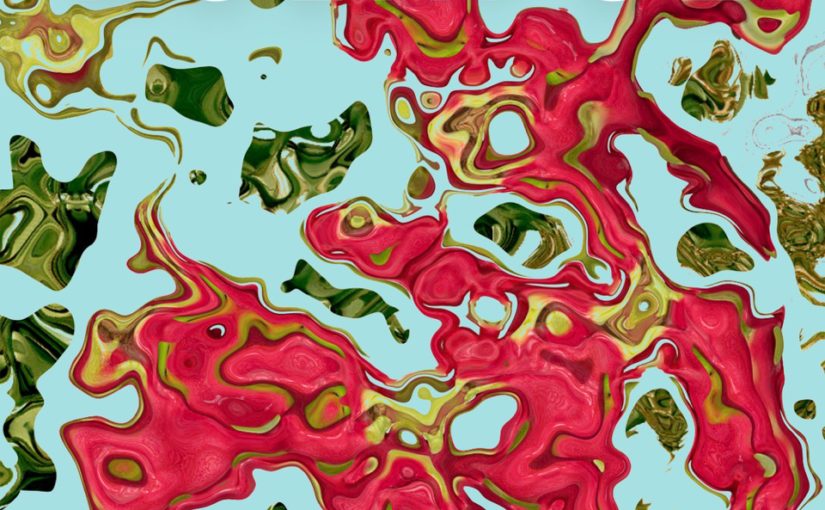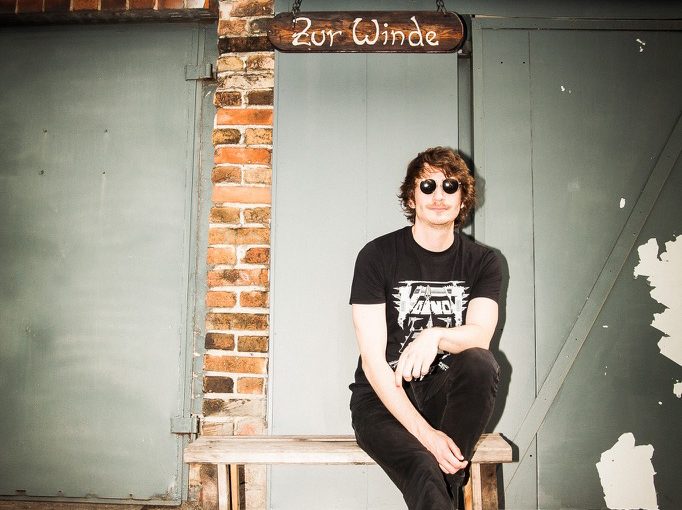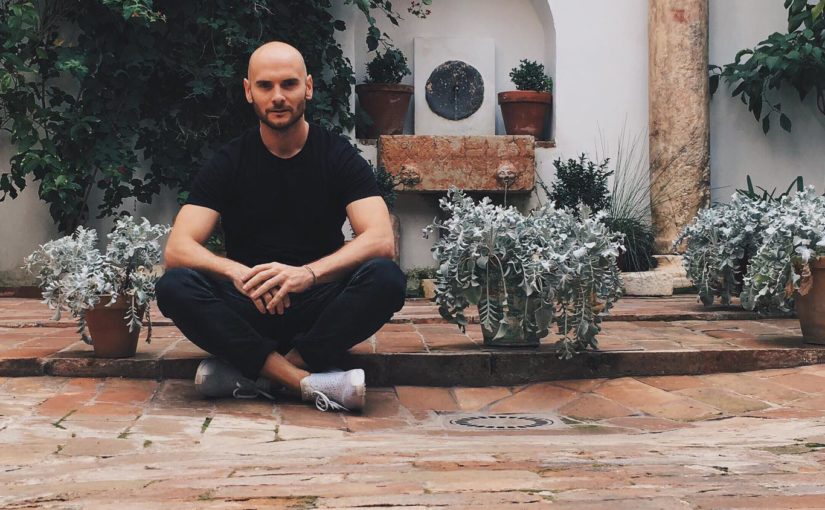Record this Composition Exercise, cut it up and rearrange it in an interesting way.
Tag: remix
Kolapse X: The Omara Remixes
On Christmas day 2016 I gave away the stem files for my piece, Omara, as a present for subscribers of my newsletter. Within four days, four people sent me remixes of the track. As the tenth and final entry in this series of posts celebrating the Kolapse remixes and remixers, I’d like to present to you four reworked versions of Omara.
Cha Blasco – Omara (Cha Blasco Remix)
Ken McByrd – 5T3M 001
midKnight muse – Omara’s Darkside [midKnight Muse mix]
Tony Simms – Omara Square
And with this we complete the Kolapse project – almost two years after kick-off and six months after the album release. Many thanks to all twenty-two people involved: Abboud Hashem, Alexander Dowerk, Arne Bense, Bernhard Wöstheinrich, Cha Blasco, Chris Herb, Christian Grothe, Cedric Theys, Erik Emil Eskildsen, Guy Birkin, Henri de Saussure, Juan Dahmen, Kathy Melaas, Ken McByrd, Markus Reuter, Pete Leuenberger, Ritxi Ostáriz, Roger Stucki, Tamara Lyn, Todd Madson, Tony Simms and Will Cruttenden.
And thank you for listening and reading. On to the next thing.
Subscribe to the a100ql email list to get a download link to all four tracks and to receive news, thoughts, essays and materials related to the blog once or twice every month.
Kolapse Interview VIII: Erik Emil Eskildsen feat. Stormtrap Asifeh
This is interview number eight in the Kolapse Interviews series, where Kolapse remixers are interviewed by fellow musicians and music afficionados. In this second to last installment, Minnesota-based experimental guitarist Todd Madson, aka Aliensporebomb, talks to Erik Emil Eskildsen and Stormtrap Asifeh.
Erik, what made you choose Polyglot as a piece to remix?
EEE: There were really only two simple reasons for this. First I asked Tobias which hadn’t been chosen yet, of the pieces he had made available for the remixes, and Polyglot was the one. Second, I liked that I could do the „lol“ wordplay with the title, hence naming my remix Plolyglol.
What was your process for remixing the tune?
EEE: I started out having some difficulties with how to do it. I was trying lots of things, looking for something. Eventually I decided to use the original piece and structure as a base layer throughout my entire remix.
The original has a very flowing rhythmic feel to it, but I chose to make my remix as much of an opposite of that as possible, so I quantized it to a fixed and very squared grid. The next step was to send all the original stems through my Boss SY-300 guitar synthesizer, creating new synth voices which were somewhat gimmicky and ridiculous. There was a point where I had these chicken-like sounds all over the place, and some of them did actually make their way into the final version. I then proceeded to program a more straight and grooving beat, playing around the original bass line (now fattened up and quantized). At that point I knew that something was still missing, and that’s when I asked my friend Abboud Hashem, aka MC Stormtrap Asifeh, if he was up for putting some vocals on the remix.
It was when I got the vocal tracks, and added them to my arrangement that it all started to take the shape. I applied a triangular form, from less at the beginning to much more at end of the piece, to the way I processed and layered the vocal tracks, letting it become more and more dense throughout the piece. This then became the overall approach to how I finalized the dynamic structure of my remix.
Other than some reverb, compression, and equalizing, I only used external guitar effects to process the tracks. On the vocals I used two pedals from Red Panda, the Particle and the Raster delays. I also used another Red Panda pedal, the Bitmap Bitcrusher, an Eventide Timefactor, and as mentioned earlier the Boss SY-300 Guitar Synthesizer.
You normally are known as a touch guitarist and this is an earthier, groovier, more direct and heavier piece than the original it came from. Any commentary on where your “usual” musical work fits here?
EEE: That’s not entirely true. Yes, I am predominantly known for my guitar work, solo or with my band The Friendly Guitar Trio, but I do consider myself a composer first and a guitarist second. I have a lot of much less guitar centric works that unfortunately still haven’t seen the light of day. An exception would be Ambidextrous Sun, my album with Bernhard Wöstheinrich (on which Tobias also appears). If you listen to that, you’ll hear that it’s very rhythmical and not very focused on guitar at all. What most don’t really know, is that I programmed all the rhythms on that album using Bernhard’s sounds, and that the pieces are more or less my re-compositions of the original improvisations we had played together.
I approached this remix as more of a new composition, rather than just a remix. I did this by using very similar compositional techniques to those that I frequently use; taking something pre-existing as a basis for a piece, and expanding that in multiple directions. That pre-existing material can be anything from a recording of an improvisation to maybe a chord sequence that fascinates me, I will then take that and analyze it, transform it, and extract new elements. In this case the pre-existing material was Tobias’ piece.
How did Abboud become involved in the remix and what direction did you give him? Or did you give him free reign?
EEE: I had actually been wanting to do some sort of collaboration with Abboud for a while, just hadn’t found the right material for it. The Plolyglol remix became the perfect starting point for this, and Abboud and I are currently talking about doing a full length collaboration album in the future. When I asked him to collaborate with me on this remix, I wanted to let him be in charge of his own output. I knew he was going to come up with something great.
The initial vocal tracks he supplied me with didn’t feel like they were long enough. I wanted to have his vocals go through the whole piece, so I had to come up with an interesting way to deal with that. His original vocal tracks are there up until around 02:12, after that I start generating new vocals. I actually did this in a very simple way: I cut up the original vocal tracks into 33 chunks that felt like they made musical sense. I then used a random number order generator to rearrange those chunks and proceeded to place them along the timeline in that new order.
Abboud, could you elaborate on the themes you chose for the lyrics?
AH: The verse I wrote for the polyglot remix mainly talks about a person attempting to escape the harsh reality many of us are experiencing. It is about how such an escape seems hopeless in the face of a powerful and controlling system, when even attempting to think outside the given rules will have fatal consequences. So you can say these lyrics are sort of a dark look at the state of the world today, and how the near future seems very orwellian. Here are the lyrics:
Something is wrong…
Everyone seems under pressure
You either play along
Or you get caught, game over
What am I searching for?
Why am I even searching?
Let whatever happens happen
Like a river I keep flowing, regardless of the circumstances
Wherever he looked there were fences
He was the first, he raced and managed to beat everyone
And as soon as he reached the top
A bullet reached him
Start over from scratch
Stand in line and fill in your application
I’m looking for a soul inside the machine
I still can’t find, hand me some lenses
Time is up, I can hear the gunshots
The immunity is active
Feelings have been frozen
Brainwash
Another one joined the army
Today, life without electricity – unimaginable
I hide my information, I erase my posts
The more buildings there are,
The less words I have
This is a state of confusion.
This is a state of illusion.
This is a state of me trying to pretend everything’s okay.
Download Kolapse for free, make sure to listen to Erik’s music on Bandcamp, Stormtrap Asifeh’s music on soundcloud, and sign up for the a100ql newsletter where I share news, thoughts, essays and materials related to the blog once or twice per month.
Kolapse Interview VII: Chris Herb
You are reading the seventh in a series of interviews with the contributors to Kolapse, a new album of remixes of tracks from my 2013 solo album, Kola. In this installment, Cha Blasco, a musician and composer from Spain but now living in Sweden, talks to Berlin-based producer Chris Herb. If you’ve followed the series you’ll have noticed that Chris was also featured in Kolapse Interview IV as one half of Drescher und Wemmser.
Photography (c) Valquire Veljkovic
I think I’ve known about Chris Herb since 2012-2013 when his debut solo album Death To False Techno came out. He has been working and collaborating with other musicians, artists and producers like Markus Reuter, Lee Fletcher, Adrian Benavides, and Tobias Reber just to name a few, whose works and careers has been pretty inspiring to me as well. That’s how I found him.
Actually Adrian Benavides and Chris, along with Alexander Dowerk, his duo partner in the techno project Drescher und Wemmser, have been pretty involved in my last record Urania: Adrian as producer and performer among many others, and Drescher und Wemmser producing remixes for the songs Broken Toys and New Playlist. I guess that’s why Tobias asked me to interview Chris about his feature on the awesome Kolapse remix album. I gladly accepted the challenge, so here is my conversation with Chris.
In all your productions, as I understand it, polyrhythms are a big part of your touch and identity. Which process do you follow when you apply them to your remixes? Do you have some routine?
When working with Drescher und Wemmser, I often choose a time signature beforehand, usually something which divides into several cycles. 15/4 for example divides into 5 and 3, so we can have two complete rhythmic cycles in one measure. We usually compose with longer measures because it gives us a larger playground and a good overview over multiple cycles, thus providing more space for tension and variations. We are very much influenced by Swiss minimal artists such as Don Li, Nik Bärtsch, Ania Losinger and the Swedish metal group Meshuggah, who are pioneers in next level composition techniques utilizing polyrhythms.
You talk about your influences from minimal, jazz and metal artists when it comes to time signature structures, but what about your sound production choices? Are there some patterns you follow? And in the case of your remix for Tobias, what made you to follow this way?
For sound production I follow a technique I’ve learned from Markus Reuter after visiting him in his studio a couple of times. What we do is we re-amp almost all signals through guitar FX gear and really destroy the signal to accentuate one specific aspect of it. Then I mix it with the original signal up to the point where it is almost inaudible. But when you do that a couple of times, it can really bring your signal to life by creating space and depth, especially when working with the audio output of software synthesizers. I think it might be similar to what exciters do, but in a multi-dimensional way. In the case of our remix, we did that in an even more destructive way, resulting in the very distorted bass synth.
Interesting – I’ll take notes for myself too! It seems a nice way to converge between analogue and digital worlds. Now that you mention Markus’ studio, I see that not only are you a composer, musician and producer and I guess sound engineer – you’re pretty much into mixing and mastering engineering also, and you’re doing so good there. How you feel about yourself in these roles?
I do compose and play the touch guitar but I totally see my strengths in producing, sound design and mixing. When I work on an idea or composition, I try to understand its core intention and express it in the way I shape the sound. To me, a composition is really just a sketch (maybe a very detailed one) and in order to bring it to life, I have to finish the painting. I don’t see myself as much of a mastering engineer though as I mostly do pre-masters. I try to let other people do the finishing touch.
Until now, we’ve been talking about things you did and the process, but what about the future? Is there some new Chris Herb music coming along?
No, I’m not actively working on new solo material. I’m very happy to be able to express myself through my work with Drescher und Wemmser. So right now we’re working on our upcoming EP ‘Hausschrank’ and on the live realization of a 60 minute composition called ‘Ultraschrank’. Furthermore I’m working on a live set with my friend Sanni, a Berlin-based DJ, producer and singer/songwriter. So my plan is to be less of an internet musician and to be more on the stage again. 🙂
That sounds exciting! I’m personally looking forward to seeing you live someday, and maybe even share stage together. Thank you for your time Chris, it has been a pleasure to learn more about you.
Thank you! First time being interviewed on my own. Hope I could give some insight
Also the time first I interviewed anyone, haha. Sure you did. Thanks again.
Download Kolapse for free, make sure to listen to Chris’ music on Bandcamp and sign up for the a100ql newsletter where I share news, thoughts, essays and materials related to the blog once or twice per month.
Kolapse Interview VI: Ritxi Ostáriz
This is the sixth installment in a series of interviews with the Kolapse remixers. Cedric Theys, who already contributed an interview with Lärmheim to the project, talks to graphic designer Ritxi Ostáriz.
How did Kola’s artwork come about? Was it based on the music or did it exist before the music?
It was made originally for the album. In that time I worked mainly in black and white and with geometric shapes. I was starting to get bored with my own style. It was so great that Tobias asked me for something with an “ethnic or tropical” feel (I don’t know if these were the actual terms) [Edit Tobias: I think “tropical” was indeed a word I used.]. So, probably for the first time, I decided to try something more organic, fewer angles and circles.

What techniques did you use? Is it more of a digital creation or does it come from drawing or photography?
It combines both. I won’t reveal the whole recipe of the artboard but I can say it all started with the photography of a pineapple. I think it’s the first time I reveal this secret!
You have a very unique style for album artwork. Where do you get your inspiration from?
I honestly don’t think I have a specific style, though I have been said that many times. If you take a look at my whole portfolio of designs, you will find very different approaches. It would be hard for me to talk about where I get my inspiration from as there is no one single way of working. Every project has its own methodology.
You’ve worked extensively with Markus Reuter and with the Iapetus family. Are there other record labels and/or artists you work with a lot too?
Markus has been a key figure in my design career and he has trusted me and my skills many times. He is for sure the client I have worked on the most projects with. But there is also Vegard Tveitan ‘Ihsahn’ and Heidi Solberg Tveitan, from Mnemosyne Productions, who have commissioned me for many of their projects. In fact, they were my first client in the music scene. I am so proud and grateful for having had the chance to work for them.

What other design and creative work do you do?
Music design has only been one of my specializations. I have also worked as a motion graphic artist and as editorial designer for books and magazines. In the last five years I have worked full time for the brand consulting firm Saffron Consultants and I am currently a Senior Visual Designer at Fjord, a Service Design consulting company.
What are some of the things you are focusing on right now that you’ve never done before?
Good question! I am currently directing, writing and recording a weekly radio podcast about Anthropology, Ethnography and the History of Human Beliefs. I am having a lot of fun and having the chance to meet and interview a lot of great scholars, writers, journalists…
Download Kolapse for free, make sure to browse Ritxi’s online portfolio at ritxiostariz.com, and sign up for the a100ql newsletter where I share news, thoughts, essays and materials related to the blog once or twice per month.
Kolapse Interview II: Kryshe
This is the second in a series of interviews with the Kolapse remixers. Dr. Arne Bense, musicologist and musician with Stil & Bense, interviews his former student Christian Grothe aka Kryshe – in German, their native tongue.
Photography (c) Liudmila Jeremies
Christian, erzähl’ kurz etwas über dich, du bist ausgebildeter Gitarrist, Produzent, Komponist, wie würdest du dich beschreiben?
Ich hab mich nie wirklich als Gitarrist gesehen, sondern habe die Gitarre eigentlich eher als einen Klanggeber benutzt, als Ausgangspunkt meiner Arbeit. Genau, wie ich meine Stimme benutze oder andere Instrumente, wobei ich die Gitarre am besten beherrsche, daher war sie zunächst meine Wahl als Klangerzeuger. Ich hatte dann irgendwann den Plan gefasst, Ambient Musik zu produzieren, wollte aber eigentlich nicht mit Ableton Live arbeiten, wobei das eigentlich schon zu der Zeit so gut wie alle gemacht haben. Die Ergebnisse waren dann immer etwas beliebig und es gab mir viel zu viele Möglichkeiten, so dass ich eigentlich keine wirkliche Verbindung zu diesen Sachen hatte, die ich da gemacht habe.
Du arbeitest viel mit Bodeneffektgeräten, so kleine, eigentlich triviale Klangeffekte. Das hatte mit dieser Reduzierung der Komplexität der Digital Audio Workstation zu tun?
Ja, schon, ich habe mir dann ein Live-Setup aufgebaut, mit einem Mischpult, externen Effekten, Drum-Computern, um erstmal Möglichkeiten zu reduzieren. Ich habe dann zwar auch Ableton Live benutzt, weil es schon komfortabel ist, habe die Software aber sozusagen eingeschränkt eingesetzt. Grundsätzlich arbeite ich von einer solchen Basis aus, auch für den Remix von Piñata.
Ich möchte also mit der Elektronik spielen und eine Soundwelt kreieren, bei der ich allerdings auch nicht immer weiß, was passiert. Wenn ich nichts mache, passiert nichts, aber ich wollte auch trotzdem ein ausreichend komplexes Setup, dass mich immer noch überraschen kann. Eine Welt, die ich zwar gestalte, aber die auch in der Lage ist, sich selbst weiterzuentwickeln. Teile der Effekte, die ich für den Remix von Piñata verwendet habe, funktionieren so. Die Software entscheidet an verschiedenen Stellen, wie die Signalkette aussieht. Wenn ich nichts hineingebe, passiert auch nichts. Eine Art Interaktion, Zusammenarbeit mit der Maschine, die mich dann auch überraschen kann.
Das Original ist ja sehr rhythmisch, nah und perkussiv, dein Remix ist flächig, rauschig, sehr dicht von der Textur her.
Meine Idee war schon, daraus eine drone-Komposition zu machen, aber nicht einfach durch das Hinzufügen irgendwelcher Flächensounds, sondern durch die Arbeit mit oder an den vorhandenen perkussiven rhythmischen Elementen des Originals. Der Remix besteht also aus veränderten Elementen des Originals.
Das heißt, es ist schon ein klassischer Remix in dem Sinne, dass du mit Audiomaterial aus dem Original gearbeitet hast. Du hast nicht mit MIDI-, Noteninformation oder ähnlichem gearbeitet, sondern mit konkret vorliegenden Klängen.
Genau, ich habe mir rausgeschnitten was ich interessant fand und das dann vielfach durch mein Effektsetup geschickt. Am Anfang hört man auch noch, dass es auch wirklich die Sounds aus der Vorlage sind, im weiteren Verlauf des Stückes, wenn die Effekte sich steigern sollten diese Sounds sich aber auflösen und gar nicht mehr hörbar sein, nur noch die drones, die aus diesen Sounds entstanden sind.
Download Kolapse for free, listen to Kryshe’s music on Bandcamp and sign up for the a100ql newsletter where I share news, thoughts, essays and materials related to the blog once or twice per month.
Kolapse
Yesterday I released Kolapse, an album with remixes of pieces from my 2013 solo album, Kola. It’s free for now, so please get a copy and tell all your polyrhythm-loving friends!

The remixers are, in order of appearance: Drescher und Wemmser (D), Guy Birkin (UK), Lärmheim (CH), Kryshe (D), The Redundant Rocker (D), Erik Emil Eskildsen feat. Stormtrap Asifeh (DK/A/PSE), Chris Herb (D) and Mathon (CH). The album was mastered by Markus Reuter and Ritxi Ostáriz again created the cover art.
We have some interesting things lined up to complement the album release over the coming months but for now, have a listen and enjoy!
To stay up to date about Kolapse and my other projects, sign up for the a100ql newsletter where I share news, thoughts, essays and materials once or twice per month.




